Anomalocaris
Here are two species, Anomalocaris canadensis and unknown species, from the genus ANOMALOCARIS.
Anomalocaris canadensis
Anomalocaris canadensis is a member of the Burgess Shale fauna, was lived in the Middle Cambrian sea 4), and a predator which is considered to bite and prey on trilobites 2), 4). Perhaps, Anomalocaris must be one of the most popular in the weird wonder creature of the Cambrian.
Anomalocaris is classified into the order Radiodonta, and is considered to be in the euarthropod stem 2), 4), 5), 7).There are some species in the genus Anomalocaris, for example, a representative species Anomalocaris canadensis from the Burgess Shale in Canada 2), A. saron from the Chengjiang Lagerstätte (the Early Cambrian) in China 4), 7), A. briggsi from the Emu Bay Shale (the Early Cambrian) at Kangaroo Island in Australia 2), and so on.
Anomalocaris has a pair of frontal appendages, an iconic structure, and has a pair of comparatively large compound eyes on the dorsolaterally protruding bold stalks 4). The ventral mouth apparatus, called oral cone, has the three large plates and many small plates surrounding the mouth opening, that is, shows the "triradial" pattern 2, 3). There is an oval carapace-like plate between the eyes stalks on the dorsal surface of the head 3), 7). It seems to be homologous to the central element of Hurdiidae, a group of Anomalocaritids.
A. canadensis has segmented trunk with at least eleven pairs of lateral flaps attaching gill-like structures called setal blades (array of fibrous or lance tip like shaped blades 2), 3), 4). The posterior end of the body is tail fan consisting of a central blade and three pairs of lateral blades extending upward 3), 4).
It is said that A. canadensis is up to 1 m, but the most complete specimen is 25 cm in length 4).
Anomalocaris has a pair of frontal appendage with spines, a large body, and lateral flaps suiting for swimming, its morphology suggests an active predator standing on the top of the Cambrian ecosystem 2). Furthermore, the specimen of injured Cambrian trilobites and the fossil of large feces including trilobite fragments have been considered as Anomalocaris's doing 2), 4).
Anomalocaris may have been good at swimming by undulating its lateral flaps. And such movements of flaps might have been also effective for gas-exchange by gills attached on the flaps 4).
Based on the hydrodynamics study of tail fan, Anomalocalis may have the ability to turn quickly with small radius 6), so the soft-bodied animals would not want to come across them.
But, described above, an ordinary individual of Anomalocaris would be about dozens cm in length. Their oral cone is not mineralized and does not show any mark of wearing down. So, they may have not able to crunch the trilobites, and may have preyed on the just-molted trilobites or the soft-bodied animals 2), 4).
One species of the Ordovician anomalocaridids has appendages adapted for filter-feeding, in spite of its body length would be up to 2 m or over 5). It might not rule out the possibility that some of the Cambrian anomalocaridids are filter-feeders.
Anomalocaris sp.
This species has furca (fork-like structure) at the posterior terminal 1).
A recent study 8) has proposed that Anomalocaris saron should be reassigned to new genus Houcaris, Tamisiocaridids (family Tamisiocarididae), Radiodonts (order Radiodonta). So we have labeled this model (previously labeled as Anomalocaris saron) to Anomalocaris sp.(a spedies of Anomalocaris).
modified in June 2020.
created in September 2016.
created in September 2016.
References:
- The Anomalocaris Homepage
- Daley AC, Paterson JR, Edgecombe GD, García‐Bellido DC, Jago JB (2013) New anatomical information on Anomalocaris from the Cambrian Emu Bay Shale of South Australia and a reassessment of its inferred predatory habits. Palaeontology 56(5):971–990. (DOI:10.1111/pala.12029.)
- Daley AC, Edgecombe GD (2014) Morphology of Anomalocaris canadensis from the Burgess Shale. [abstract] J. Paleontol., 88(1):68-91. (DOI:10.1666/13-067.)
- Anomalocaris canadensis - The Burgess Shale (Royal Ontario Museum)
- Van Roy P, Daley A, Briggs D (2015) Anomalocaridid trunk limb homology revealed by a giant filter-feeder with paired flaps. [abstract] Nature 522:77–80. (DOI: 10.1038/nature14256.)
- Sheppard KA, Rival DE, Caron JB (2018) On the hydrodynamics of Anomalocaris tail fins. Integr. Comp. Biol. 58(4): 703–711. (DOI: 10.1093/icb/icy014.)
- Zeng H, Zhao F, Yin Z, Zhu M (2018) Morphology of diverse radiodontan head sclerites from the early Cambrian Chengjiang Lagerstätte, south-west China. [abstract] J. Syst. Palaeontol. 16(1):1-37. (DOI:10.1080/14772019.2016.1263685.)
- Wu Y, Fu D, Ma J, Lin W, Sun A, Zhang X (2021) Houcaris gen. nov. from the early Cambrian (Stage 3) Chengjiang Lagerstätte expanded the palaeogeographical distribution of tamisiocaridids (Panarthropoda: Radiodonta). [abstract] PalZ 95, 209–221. (DOI: 10.1007/s12542-020-00545-4.) (The full-text was referred to Research Gate.)


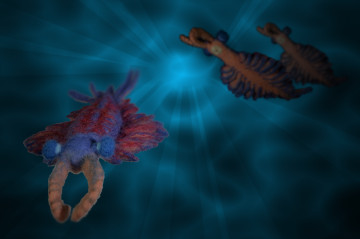
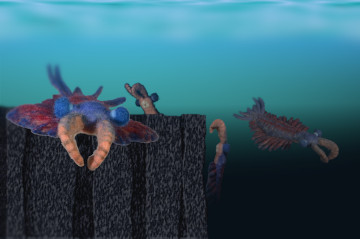
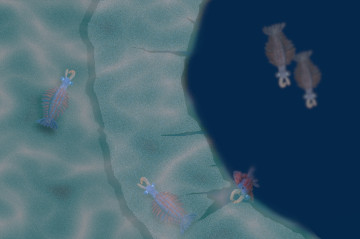
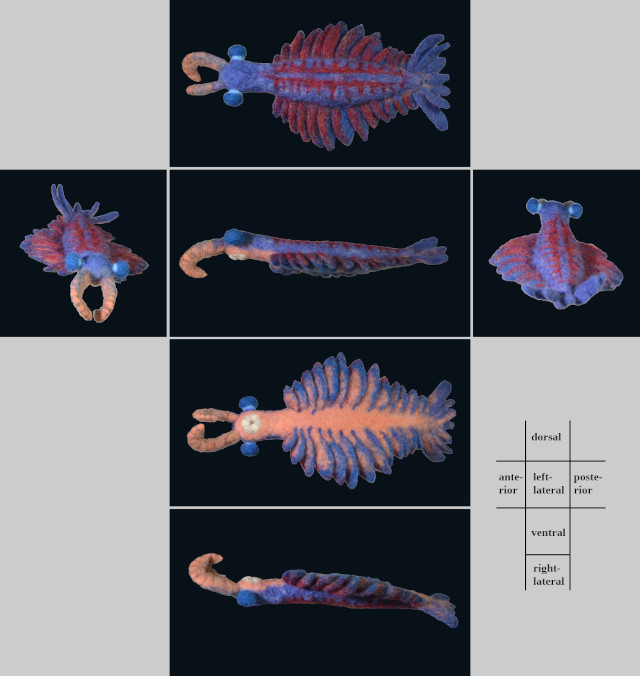
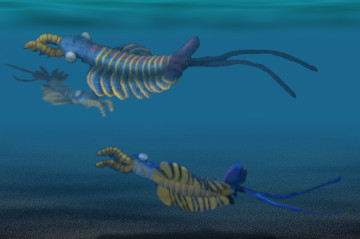
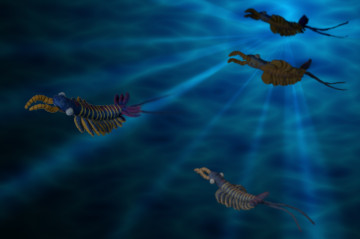
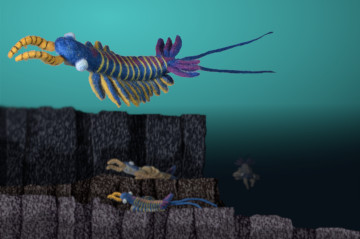
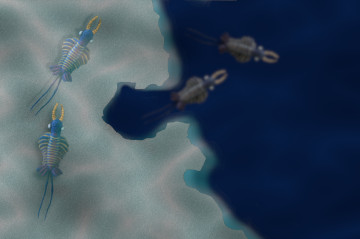
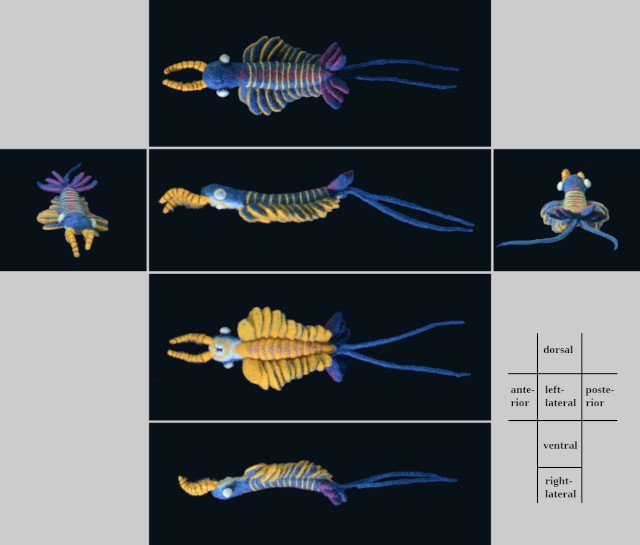
re-created in April 2020.